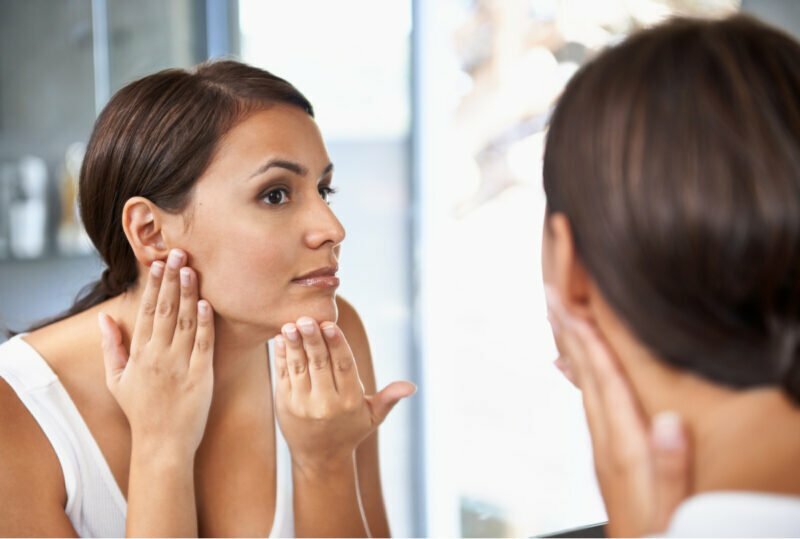Here’s What NOT to Do After Getting Cosmetic Injectables

Cosmetic injections are increasingly in-demand—in fact, a majority of our Hagerstown and Frederick patients use them to refresh their look and give their skin some needed TLC. But, while dermal fillers and Botox can quickly take years off your appearance, there are a few things you’ll want to avoid in the days following your treatment.
But before we dive into our list, it’s important to understand how Botox and dermal fillers act once they’re injected into the body.
Botox and fillers act differently in your body
Both Botox and dermal fillers are eventually metabolized by the body and safely excreted through the liver and kidneys. For this reason, many of the same activities, such as drinking alcohol and exercising, should be avoided after both Botox and dermal filler injections. However, because dermal fillers are injected deep into the skin where they rest for the duration of their life while Botox is injected into muscle where it’s slowly absorbed, there are some different activities to avoid for each.
What not to do after getting Botox injections
Botox is a neurotoxin that is injected into the muscle to temporarily reduce the appearance of dynamic lines and wrinkles (those caused by smiling, frowning, and squinting). Botox typically lasts for about 4 months until it is fully metabolized by the body. While Botox has a safe and effective track record, there are a few things you’ll want to avoid after receiving it.
1. Don’t participate in intense cardio
Cardio exercises are great for boosting your endorphins and burning fat but not so great for optimizing your Botox results. This is because cardio temporarily raises your blood pressure, which can increase your risk of bruising and/or swelling at your injection site. We know it’s hard if you’re a workout junkie, but we recommend waiting a full day after your neurotoxin injections to perform any exercise that increases your heart rate for a prolonged period of time. Don’t worry—your patience will actually help you enjoy glowing results sooner!
We recommend waiting a full day after your injections to perform any exercise that increases your heart rate for a prolonged period of time.
2. Don’t apply makeup or use facial tools
Wait at least 30 minutes after your Botox injections to apply makeup. Neurotoxin injections leave tiny prick marks in your skin where they are injected, and these openings can be gateways for bacteria present in your makeup if you apply them right after your treatment. However, after just 30 minutes, these tiny puncture sites will begin to heal themselves and you can return to your normal makeup routine.
Facial tools, like jade rollers and Gua Sha stones, can increase blood flow to the areas where they are applied, potentially causing swelling, bruising, or migration of Botox beneath the skin—so also delay use of these tools.
3. Don’t lie down
Avoid lying down for the first four hours after getting Botox. This will help prevent the accidental migration of any of the neurotoxin and avoid bruising. For the same reasons, you should also avoid sleeping on the side of your face you’ve had Botox performed for the first night following your treatment. This will also allow the Botox to settle into your muscles properly.
4. Don’t drink alcohol
Prone to bruising? It’s best if you can avoid alcohol for a full day before and after your Botox treatment, since alcohol is a blood thinner and can increase your risk of bruising. Botox can also make some people feel mildly dizzy or drowsy for a few hours post-treatment; if you feel this way after your injections, alcohol could worsen symptoms.
What not to do after getting dermal fillers
Dermal fillers “fill in” static wrinkles (those that are visible when your face is at rest), such as nasolabial folds and vertical lip lines. Fillers can also restore lost volume and increase collagen production to smooth and rejuvenate dull, dehydrated skin. Though dermal fillers are extremely safe, you should avoid the following activities following your filler treatments.
1. Don’t get a facial, massage, or dermaplaning
Although extremely rare, dermal fillers are able to migrate within the skin if consistent and adequate pressure is applied to them. For this reason, we advise patients not to get a facial, massage (on the treated skin), or dermaplaning for the first two weeks following their filler injections.
Similarly, don’t rub your injection sites for the first day following your dermal filler injections, as this can irritate the skin and cause or exacerbate bruising or swelling. While massage can sometimes improve mild symptoms such as moderate lumpiness or slight asymmetry, don’t perform massage on your fillers unless instructed to do so by your plastic surgeon or injector.
2. Don’t wear goggles or eyewear that puts pressure on treated areas
If you have received fillers in the upper half of the face, avoid wearing goggles or eyewear in the days immediately following your filler injections. Like massage, the pressure of certain types of eyewear could potentially cause your filler to migrate beneath the skin. We also advise our patients to avoid wearing glasses following any filler injections in the nose (“liquid rhinoplasty”) for the first week following their injections to make sure they achieve optimal results.
3. Don’t suntan
Avoid direct sun exposure and tanning beds for a full day following your dermal filler treatment. Exposing your treated skin to direct UV rays could cause redness, bruising, and/or swelling around your fillers. If you have to be outside in the sun, be sure to wear sunscreen with a strong SPF and protective clothing to shield your skin.
What if I’m unhappy with my cosmetic injections?
Correcting Botox. While Botox can’t be undone, your plastic surgeon can inject Botox into other areas of your face to help restore symmetry and reduce Botox’s visibility if for any reason you are unhappy with your results. Keep in mind that Botox is mostly absorbed by your body after about 4 months, at which point your results will begin to fade.
Correcting fillers. If you’re unsatisfied with your dermal fillers, your surgeon can inject hyaluronidase to undo any hyaluronic acid-based dermal fillers, including Juvéderm and Restylane fillers.
Can I combine dermal fillers and Botox?
Botox and fillers can be combined for excellent results. Your plastic surgeon may choose to inject Botox first to allow your muscles to relax before injecting a filler, or he or she may choose to inject both during the same treatment. Part of why combining Botox and dermal fillers is so effective is that each substance is used to treat different types of wrinkles and provide various other benefits.
Receive expert Botox injections with Hagerstown plastic surgeon Dr. Garazo
Board certified plastic surgeon Dr. Henry Garazo performs all aesthetic injections himself. He was named one of “America’s Top Plastic Surgeons” by the Consumers’ Research Council of America for 11 consecutive years, and has been recognized by Vogue, Glamour, Allure, and Self magazines as one of the “Outstanding Plastic Surgeons in Maryland.” To schedule your Botox or filler appointment, contact us online or call (301) 791-1800.
Leave a Comment

Can I use honey on my face two week after fillers and Botox
Hi Debbie, thank you for your comment. Typically, you can resume your normal skincare routine 24 to 48 hours after Botox and fillers, and if your skincare product(s) include honey as an ingredient, that should be fine, but you should avoid any products with active ingredients or harsh chemicals for at least a week to ensure the treatment sites are not irritated. Always follow your provider’s specific advice and when in doubt, consult with them to ensure the best care for your skin post-procedure.
Thankyou for the above information. I only have 1 kidney. Is Botox and fillers safe to use when I only have the one kidney?? Thankyou I would appreciate your comments regarding this please.
Dallas Weare.
Hi Dallas, thank you for your comment. While there is no direct evidence to suggest a specific risk for individuals with one kidney, it’s always best to be cautious. We recommend you consult with your primary care physician, and/or a plastic surgeon and a nephrologist to make an informed decision based on your unique health situation.